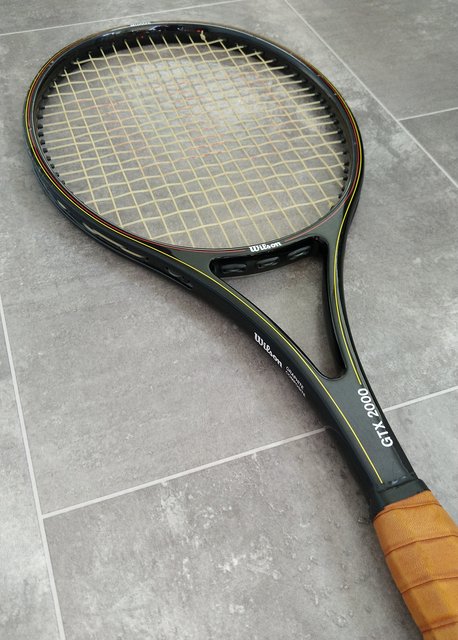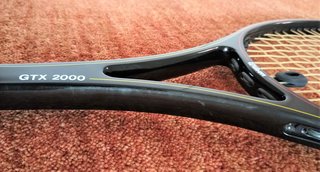made_in_austria
New User
hi,
has anybody some information about the Wilson GTX 2000 racquet?
can not find anything on the net.
thx
has anybody some information about the Wilson GTX 2000 racquet?
can not find anything on the net.
thx

Wondering if it's a bit earlier like late 70s \ early 80s.





Were Odyssey and Pro Comp 200 also SanHoSun factory?
Coming back to the Sting braceless, the first picture does look like the bridge is wider, but the subsequent pictures are not so different to the GTX. There are similar 3x2 grommets, and the first picture is deceptive because the top paint in mid-grey ends before the throat paint in black starts. So the throat looks wider from the top, but the angled views in pictures 2 & 4 the throat looks similar width. The Sting also has the gentle curving starting from the handle, we can't see the full length of above the handle because of the plastic protection, the rounded grommet strip ends are the same, mains 7&8 start at the same point relative to the throat, and of course is also without PWS, like the GTX. The last couple of Sting listing pictures also show the head is fairly oval like the GTX. So I'm seeing the GTX as clearly not an Odyssey nor a Sting direct copy, but somewhere in between.

